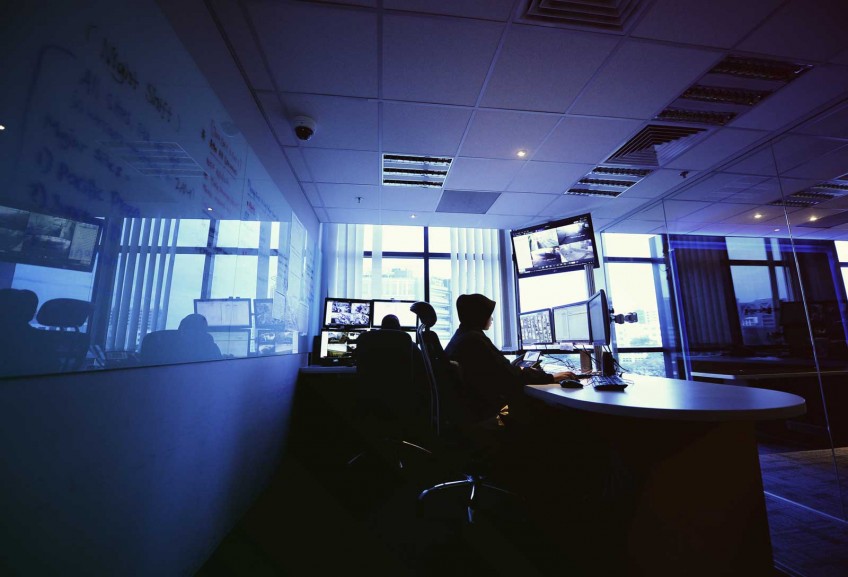Conducting our entire lives 'in camera'

There is a quaint legal term I remember from my days as a crime reporter: in camera.
It refers to hearings conducted in the judge's chambers. It is meant to protect the young and vulnerable, especially in sensitive cases. These days, it seems our entire lives are conducted "in camera".
We have gone from blissful anonymity to reluctant personality, our images, our moves - innocent, uncouth, illegal or mundane - captured by cameras on the streets at HDB blocks, shops, restaurants, clubs.
Police have installed 65,000 cameras since 2012; they will add another 11,000 over the next four years.
That no one seems to mind is, as the Prime Minister said last week, because of the trust that the Government would safeguard our privacy as zealously as it guards our security.
And that is as it should be - the logic of surveillance amid the reality of radical insurgency. In the aftermath of tragedy, any argument for privacy would be petty.
Referring to Thursday's terrorist attack, Nice's regional president Christian Estrosi said the county has 1,200 security cameras. The cameras pinpointed the moment the attacker boarded the truck and followed his path to the promenade.
Those "eyes" would no doubt be critical as investigations now turn to the possibility of accomplices.
The case for surveillance is clear. Not so, "social" cameras.
Technology has empowered the amateur auteur and enthralled the voyeur. And social media has enabled the silliness to go viral.
What's disconcerting is the camera phone in the hands of the hordes who increasingly swear by the power of their pixels.
Do user-generated videos help or hinder?
We have seen the extreme. Videos of black people shot by police have inflamed emotions, led to violence and a fractured society.
If the heated rhetoric on US talk radio and Fox News is any indication, the US seems to have gone tribalistic, bordering on ballistic.
We are fallible because we see what we wish to see, our lens jaundiced by ingrained prejudices.
In an untruthful world, can we trust what we see to be the truth?
In a world where indiscretion can be captured "in camera" for all to ogle, can we be discerning enough to avoid trial by camera?
Don't be the judge.
When cameras protect
The scene is eerily silent, save for the gentle whirring of machinery.
Stepping inside Certis Cisco's Integrated Operations Centre (IOC), what strikes the visitor is the sheer number of computer screens.
The IOC houses more than 50 screens recording footage of Certis Cisco cameras at strategic locations all over Singapore.
This reporter saw about 30 officers scanning the screens when he was there, the images in the dimly lit room reflected in their eyes.
It was the first time in the IOC's 10 years that anyone from the media was allowed an exclusive peek.
The IOC is a state-of-the-art nerve centre designed and built to monitor the security company's staff, assets and surveillance systems in places such as Changi Airport, shopping malls, banks and key installations for government agencies.
As the largest CCTV installer in Singapore, Certis Cisco installs over 10,000 cameras every year.
IOC head Tristan Sim says: "We're running 24 hours a day, seven days a week. Our staff take shifts, and we always have eyes on the ground because the threats of danger never sleep."
Camera surveillance at the IOC is done in a different way from traditional monitoring.
Instead of deploying an officer to watch a fixed set of screens, Certis Cisco has cameras that use video content analysis for more effective monitoring.
These "smart CCTVs" alert the IOC and its officers if they detect strange motion or behaviour in restricted areas.
"By doing so, the cameras actually carry out virtual patrolling and complement the physical foot patrol by our officers," says Mr Sim.
ANOMALIES
But camera surveillance cannot be left to machines alone.
Officers at the IOC are trained to spot any anomalies in the footage gathered by the cameras.
They look out for disturbances in regular patterns. If, for example, a path is suddenly blocked by an item or an exit in a building is blocked, ground officers will be alerted.
This way, says Mr Sim, Certis Cisco is able to manage the situation or incident more effectively.
"The idea is for the cameras to work in tandem with our officers, not in isolation, to give our customers the best kind of coverage that they can get."
At the IOC, Certis Cisco also oversees the vitals of its cameras and make sure they never fail.
The centre is able to check the details of all its systems across the island, including the health of its power source, the quality of the footage gathered and the storage and archiving systems.
"Camera footage is important not only for immediate response to incidents, it is also integral for post-event investigation," says Mr Sim.
"It is our job to keep our systems running too."
By the numbers
Over 62,000 - Number of police cameras installed islandwide since April 2012
2,300 - Number of video footage from the cameras that provided useful leads
10,000 - Blocks and carparks under the PolCam 1.0 initiative
Over 1,100 - Number of cases that video footage helped police to solve
11,000 - Cameras to be installed from now till 2020
85 per cent - Smartphone penetration in Singapore in 2014, the highest in the world
8,126,600 - Mobile subscription in June 2015
1.5 - Number of mobile phone connections for each citizen in June 2015

This article was first published on July 17, 2016.
Get The New Paper for more stories.